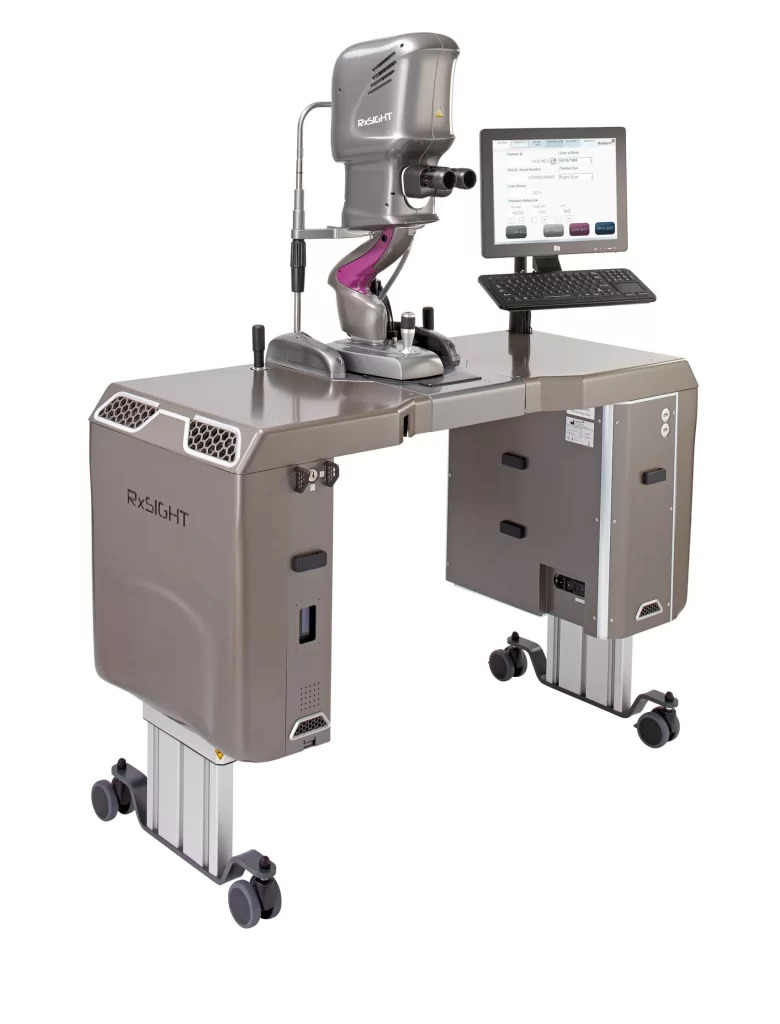
Shares of RxSight Inc. tumbled 38% in the trading session after the cataract lens maker reported disappointing preliminary second quarter results July 8.
The Aliso Viejo-based company reported expected second quarter revenue of about $33.6 million, missing analysts’ expectations of $39.8 million. It also decreased 2025 revenue guidance to $120 million to $130 million, below previous guidance of $160 million to $175 million, citing “second quarter underperformance.”
“Guided by insights from our second quarter underperformance and building on our long-term vision, we are evolving our commercial approach to re-direct more of our focus toward supporting customer success within new and existing practices,” Dr. Ron Kurtz, chief executive and president of RxSight, said in a statement.
The second quarter results caused analysts to question the company’s strategy and noted new competition. Its annual sales jumped six-fold from $22.6 million in 2021 to $139.9 million in 2024. RxSight went public at $16 per share in 2021 and its market cap last year touched $2 billion. Kurtz was one of the Business Journal’s executives of the year for 2024.
The second quarter followed a disappointing first quarter where the company also missed analysts’ expectations.
The company is facing increased competition from rivals like Alcon, according to the BTIG analyst firm, which downgraded the shares from Buy to Neutral. Jefferies downgraded RxSight from Buy to Hold and reduced its price target on the company from $24 to $9. Wells Fargo also downgraded RxSight from Overweight to Equal Weight.
“While most investors like the technology and view the company as a strategic asset, many are surprised by the recent slowdown and there remains some debate as to whether the company’s updated guidance is base case or sandbagged,” Piper Sandler analyst Adam Maeder wrote in a note to investors.
The shares have now declined by 87% since a 52-week high of $58.23 last August. The company was trading at $7.74 and a $315 million market cap at press time (Nasdaq: RXST).
Shifting Commercial Strategy
The company’s technology permits doctors to adjust the lenses after cataract surgery, allowing patients to avoid glasses. The company has two major revenue streams – the lenses themselves, called LAL, and the light delivery device machines, LDD, that make the adjustments.
Much of the decrease in preliminary revenue was tied to a 49% drop in LDD sales year-over-year. The company’s LDD product uses proprietary software and algorithms to deliver a short UV exposure treatment that can adjust the lens after cataract surgery in less than 60 seconds.
Kurtz attributed the revenue decline to customers being slower to adopt its technologies.
“Adoption challenges over the last few quarters have been a primary reason for the LDD stall,” Kurtz said during a July 8 earnings call.
“There are also quarterly specific issues like longer capital equipment acquisition times, but accelerating LAL utilization is key to impacting LDD sales in the long run.”
To address this issue, RxSight said that it’s implementing a shift in commercial strategy focused on providing more clinical support and education to customers.
RxSight Chief Financial Officer Shelley Thunen said that even with these efforts, the company doesn’t expect LDD sales to be much higher than in the second quarter.
“The new guidance reflects the reality that newer customers are getting up to speed less quickly, and older customers are flat or down,” Thunen said in the earnings call.
RxSight is scheduled to report full financial results for the second quarter on Aug. 7.
